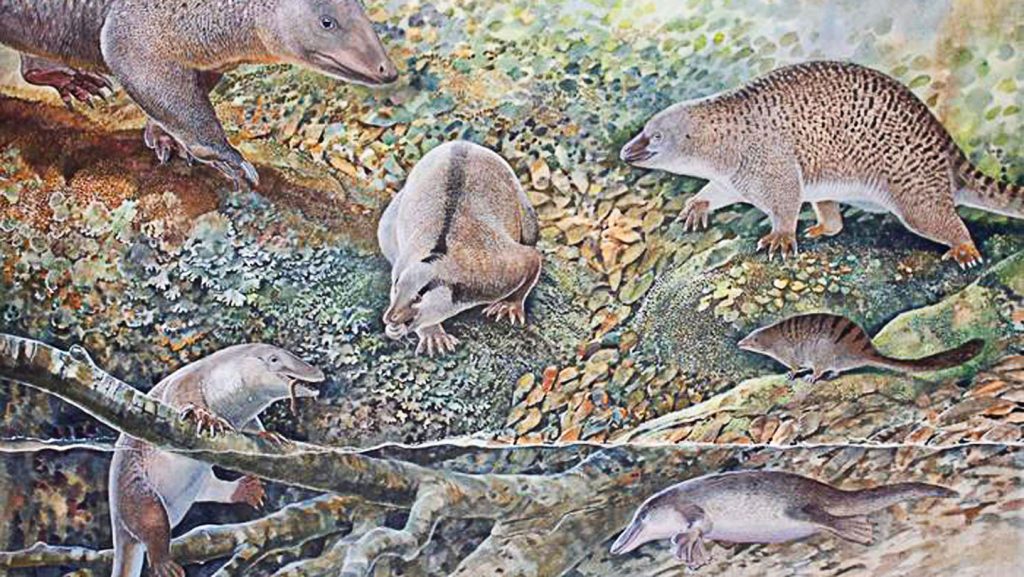Scientists have discovered three new species of monotremes, egg-laying mammals that include the platypus and echidna, in 100-million-year-old rocks in Australia. This doubles the number of known monotreme species during the Cretaceous Period, suggesting a diverse group of mammals may have once populated the continent. Monotremes are unique in that they lay eggs and nurse their young with milk, a characteristic shared with other mammals.
The Australian platypus is a bizarre creature with a combination of features from different animals, such as a toothless bill, beaver-like tail, and otter-like feet. They possess electro-sensory bills that allow them to detect prey underwater and males have venomous spurs on their hind feet. Initially mistaken for a hoax due to its unusual appearance, the platypus is a living fossil that provides insight into the ancient world and the evolution of mammals.
The new fossils were found in New South Wales and shed light on the diversity of extinct monotremes in Australia. The fossils range in size from pig-sized to rat-sized and include specimens with various dental configurations, providing valuable information on the animals’ sizes, dental structures, and evolutionary relationships. One of the species, Opalios splendens, exhibits a mix of features seen in modern echidnas and platypuses, suggesting it may be an ancestor of both.
The discoveries also highlight the transition of monotremes from toothy to toothless forms over time. The earliest known monotreme, Teinolophos trusleri, was a small, beakless creature with five molar teeth. In contrast, some of the newly discovered species have only three molars, similar to modern platypuses and echidnas, which are essentially toothless. This shift in dental structure may be linked to changes in diet, with softer food replacing tougher prey like crustaceans and insects.
The findings reveal a fascinating glimpse into the evolutionary history of monotremes in Australia, suggesting a wide range of forms once existed before being replaced by modern platypuses and echidnas. The fossil record provides crucial information on the ancient ecosystems of Australia and the emergence of unique mammalian lineages in the region. Further research on these newly discovered species will enhance our understanding of the ancient past and the evolutionary diversity of monotremes.


